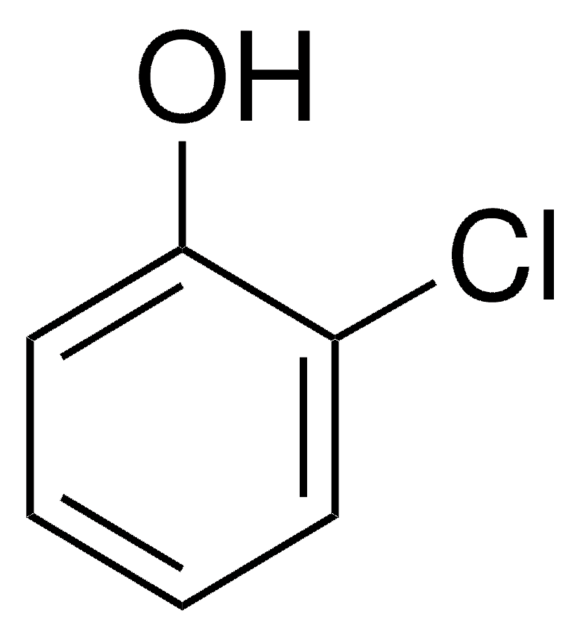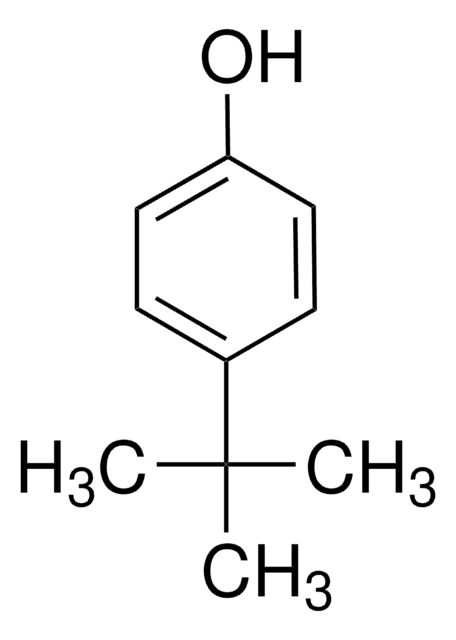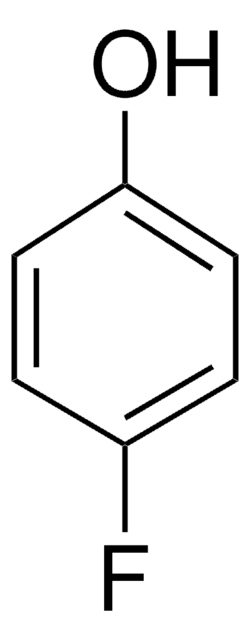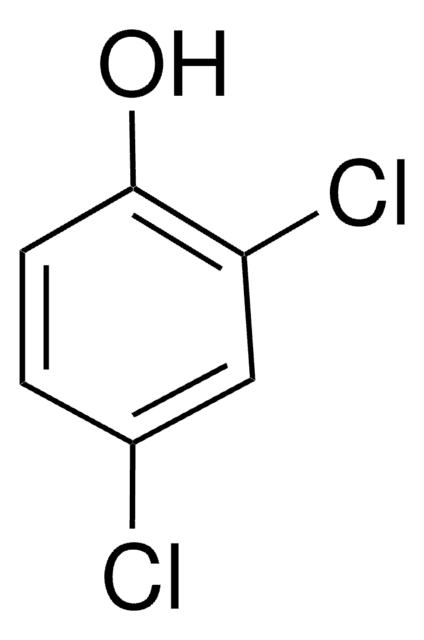185787
4-Chlorophenol
≥99%
Synonym(s):
4-Chlorophenol, 4-Hydroxychlorobenzene, p-Chlorophenic acid, p-Chlorophenol
About This Item
Recommended Products
vapor pressure
1 mmHg ( 49.8 °C)
Quality Level
Assay
≥99%
form
solid
impurities
<1.0% Phenol
bp
220 °C (lit.)
mp
42-45 °C
solubility
ethanol: soluble 50 mg/mL, clear to very slightly hazy, colorless to faintly brownish-yellow
density
1.306 g/mL at 25 °C (lit.)
functional group
chloro
SMILES string
Oc1ccc(Cl)cc1
InChI
1S/C6H5ClO/c7-5-1-3-6(8)4-2-5/h1-4,8H
InChI key
WXNZTHHGJRFXKQ-UHFFFAOYSA-N
Looking for similar products? Visit Product Comparison Guide
Related Categories
General description
Application
- As a substrate in the visible-light-induced degradation studies of phenolic compounds in an aqueous suspension of pure TiO2.
- As a model chlorinated organic pollutant in the hydrodechlorination studies of phenols using palladium nanocrystal catalysts.
- To prepare 4-chlorocatechol, hydroquinone, and benzoquinone via photo mineralization using Degussa P25 TiO2.
Signal Word
Danger
Hazard Statements
Precautionary Statements
Hazard Classifications
Acute Tox. 4 Dermal - Acute Tox. 4 Inhalation - Acute Tox. 4 Oral - Aquatic Chronic 2 - Eye Dam. 1 - Skin Corr. 1B
Storage Class Code
6.1C - Combustible acute toxic Cat.3 / toxic compounds or compounds which causing chronic effects
WGK
WGK 2
Flash Point(F)
249.8 °F - closed cup
Flash Point(C)
121 °C - closed cup
Personal Protective Equipment
Choose from one of the most recent versions:
Already Own This Product?
Find documentation for the products that you have recently purchased in the Document Library.
Customers Also Viewed
Our team of scientists has experience in all areas of research including Life Science, Material Science, Chemical Synthesis, Chromatography, Analytical and many others.
Contact Technical Service











